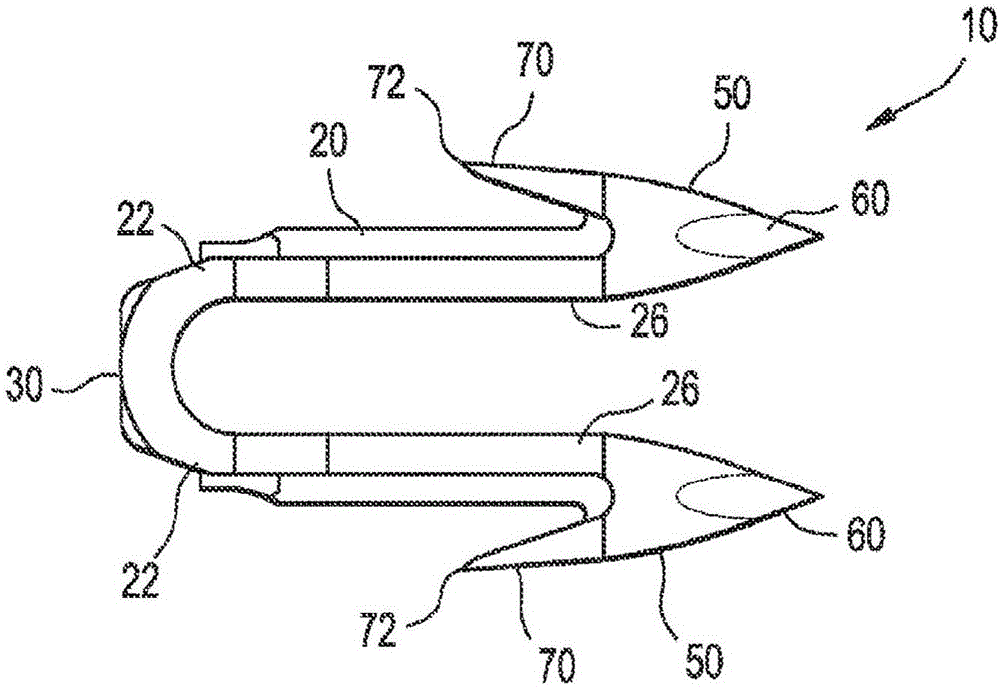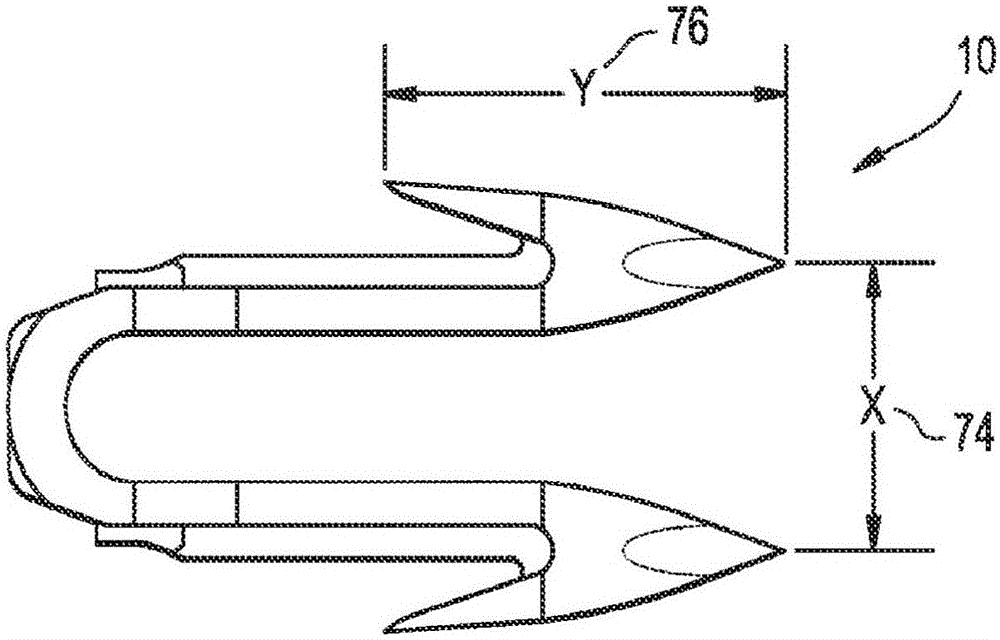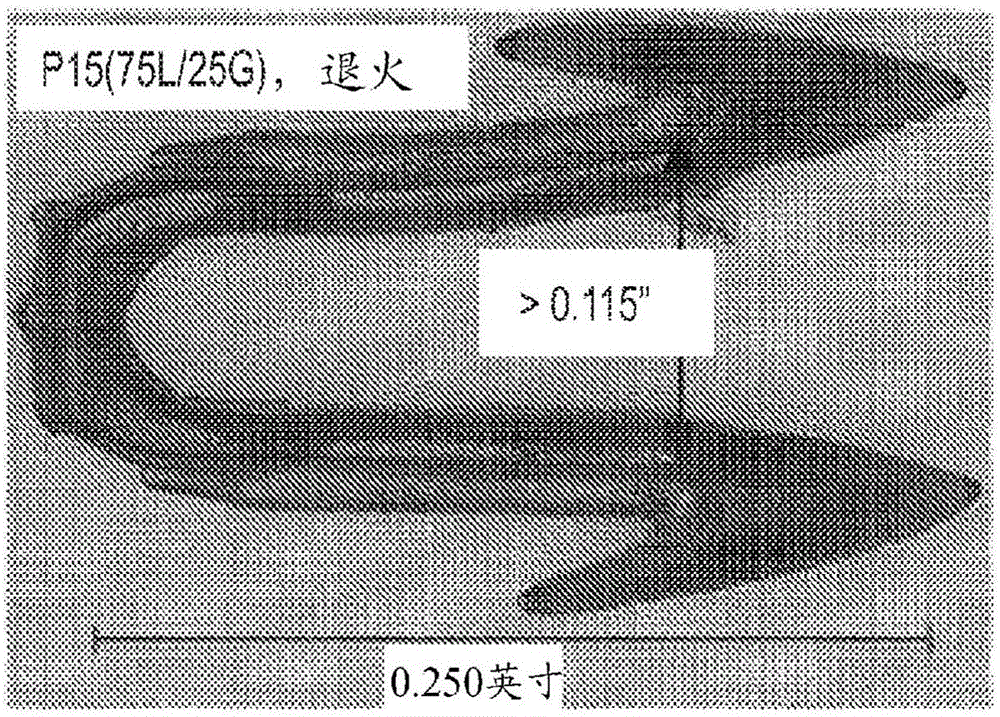Absorbable polymeric blend compositions based on copolymers prepared from mono- and di-functional polymerization initiators, processing methods, and medical devices therefrom
一种医疗装置、聚合物的技术,应用在机械设备、医药科学、外科固定钉等方向
- Summary
- Abstract
- Description
- Claims
- Application Information
AI Technical Summary
Problems solved by technology
Method used
Image
Examples
Embodiment approach
[0064]
[0065] Problem to be solved I :
[0066] Many absorbent resins have relatively low glass transition temperatures, resulting in low deflection temperatures unless the formed part crystallizes to a sufficient extent. From an economic standpoint [part / hour produced], the rate at which crystallinity develops to form a given part during the injection molding process is very important as the cycle time is increased to allow sufficient crystallization to occur in the mold. But perhaps more importantly from a performance standpoint, a long cycle time will result in a long residence time in the cylinder, leading to degradation of the resin. This degradation reduces the molecular weight of the resin, resulting in lower mechanical properties and possibly faster loss of mechanical properties over time after implantation.
[0067] Therefore, it is desired to increase the crystallization rate of absorbent resins to aid in the development of dimensional stability of molded par...
Embodiment 1
[0116] 85 / 15 poly(L(-)-lactide-co-glycolide): Synthesis of polymers with standard molecular weight distribution
[0117] Into a suitable conventional 15 gallon stainless steel oil-jacketed reactor equipped with an agitator was added 43.778 kg of L(-)-lactide and 6.222 kg of glycolide, along with 121.07 g of dodecanol and 9.02 mL of 0.33M stannous octoate Toluene solution. The reactor was closed and the purge cycle was started while stirring at a rotational speed of 12 RPM in an upward direction. The reactor was evacuated to a pressure of less than 200 mTorr, then nitrogen was introduced to achieve a pressure slightly in excess of one atmosphere. This cycle was repeated several times to ensure a dry atmosphere.
[0118] At the end of the last nitrogen introduction, the pressure was adjusted to slightly above one atmosphere. Heat the vessel at a rate of 180°C / hour until the oil temperature reaches about 130°C. The vessel was maintained at 130°C until the monomers were comp...
Embodiment 2
[0124] Poly(p-dioxanone): Synthesis of Standard Molecular Weight Polymers
[0125] Into a suitable conventional 65 gallon stainless steel oil-jacketed reactor equipped with an agitator was charged 164.2 kg of p-dioxanone monomer (PDO), along with 509 grams of dodecanol, 164 grams of D&C Violet No. 2 dye, and 100 grams of 0.33M stannous octoate in toluene. The reactor was closed and the purge cycle was started while stirring at a rotational speed of 12 RPM in an upward direction. The reactor was evacuated to a pressure of less than 500 mTorr, and then nitrogen gas was introduced. Repeat this cycle several times to ensure a dry atmosphere.
[0126] At the end of the last nitrogen introduction, the pressure was adjusted to slightly above one atmosphere. Heat the vessel at a rate of 180°C / hour until the oil temperature reaches about 100°C. The oil temperature was maintained at 100°C until the batch temperature reached 50°C, at which point the agitator rotation was changed to...
PUM
| Property | Measurement | Unit |
|---|---|---|
| diameter | aaaaa | aaaaa |
| temperature | aaaaa | aaaaa |
| viscosity index | aaaaa | aaaaa |
Abstract
Description
Claims
Application Information
 Login to View More
Login to View More - R&D
- Intellectual Property
- Life Sciences
- Materials
- Tech Scout
- Unparalleled Data Quality
- Higher Quality Content
- 60% Fewer Hallucinations
Browse by: Latest US Patents, China's latest patents, Technical Efficacy Thesaurus, Application Domain, Technology Topic, Popular Technical Reports.
© 2025 PatSnap. All rights reserved.Legal|Privacy policy|Modern Slavery Act Transparency Statement|Sitemap|About US| Contact US: help@patsnap.com



